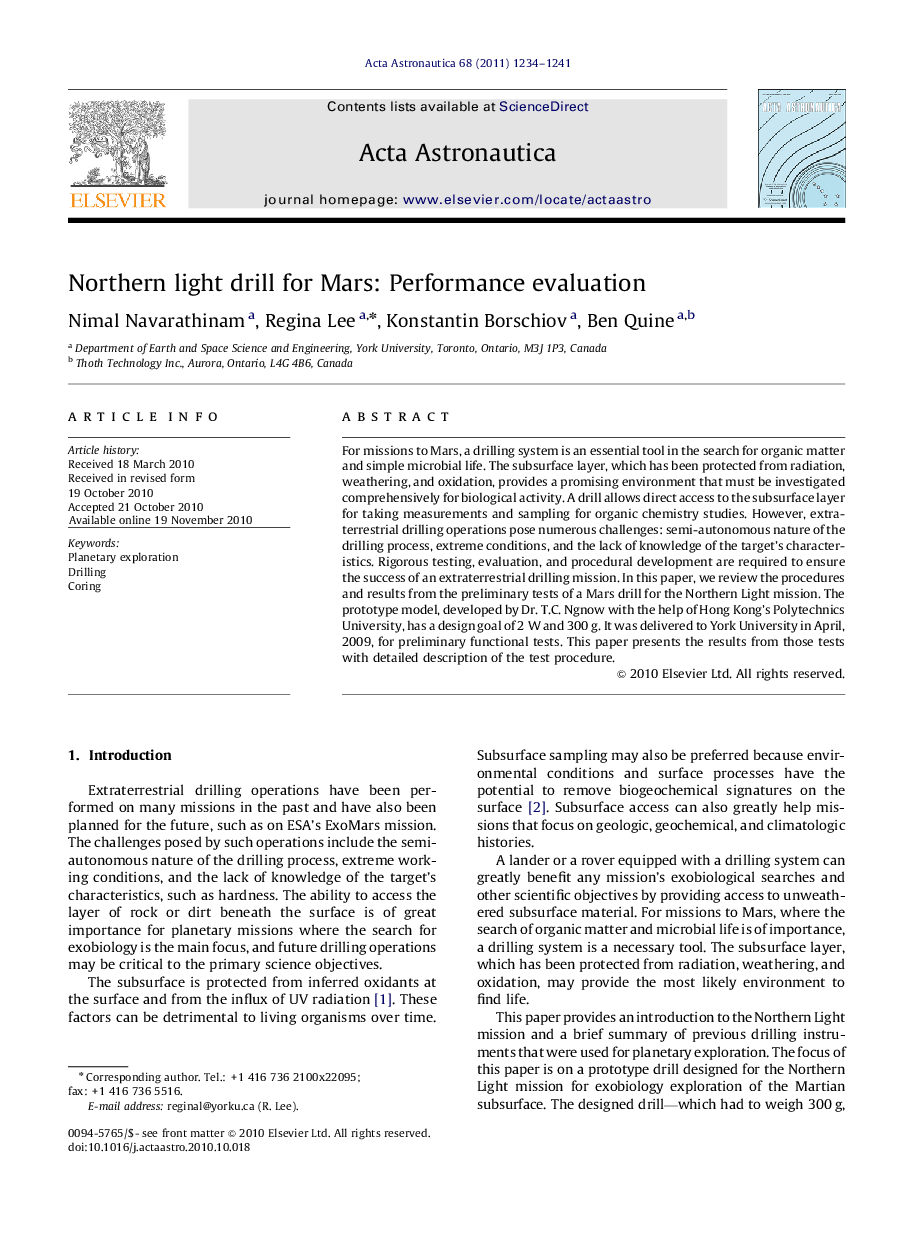| Article ID | Journal | Published Year | Pages | File Type |
|---|---|---|---|---|
| 1715941 | Acta Astronautica | 2011 | 8 Pages |
For missions to Mars, a drilling system is an essential tool in the search for organic matter and simple microbial life. The subsurface layer, which has been protected from radiation, weathering, and oxidation, provides a promising environment that must be investigated comprehensively for biological activity. A drill allows direct access to the subsurface layer for taking measurements and sampling for organic chemistry studies. However, extraterrestrial drilling operations pose numerous challenges: semi-autonomous nature of the drilling process, extreme conditions, and the lack of knowledge of the target’s characteristics. Rigorous testing, evaluation, and procedural development are required to ensure the success of an extraterrestrial drilling mission. In this paper, we review the procedures and results from the preliminary tests of a Mars drill for the Northern Light mission. The prototype model, developed by Dr. T.C. Ngnow with the help of Hong Kong’s Polytechnics University, has a design goal of 2 W and 300 g. It was delivered to York University in April, 2009, for preliminary functional tests. This paper presents the results from those tests with detailed description of the test procedure.
